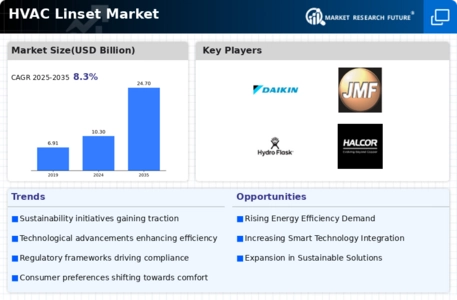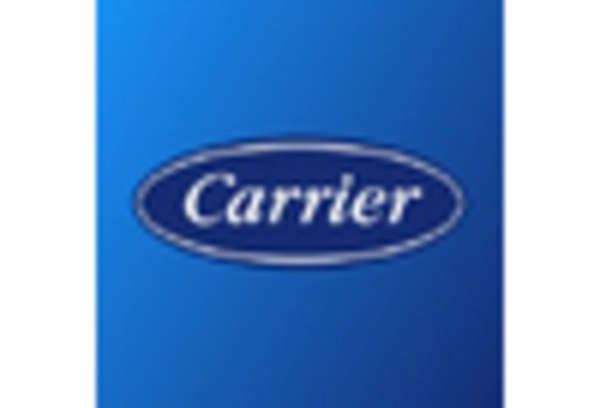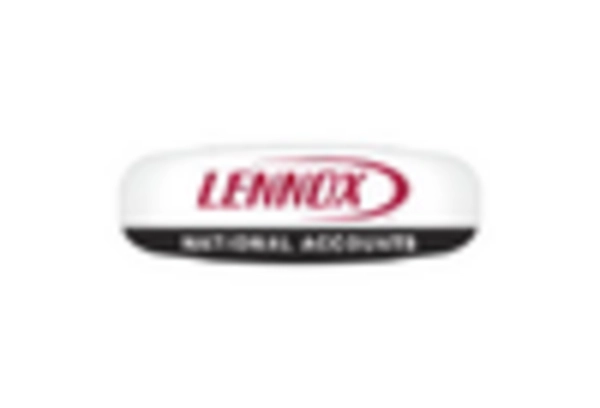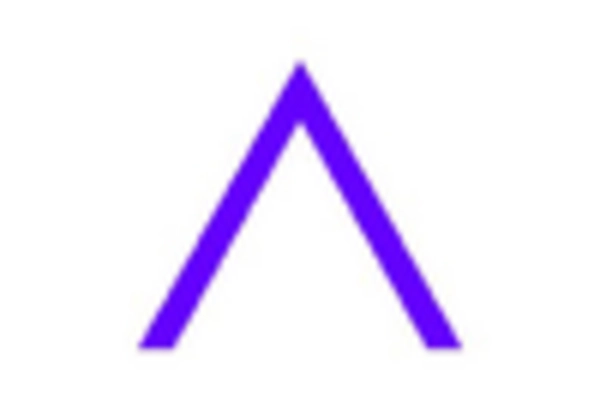Increased Construction Activities
The HVAC Linset Market is benefiting from a resurgence in construction activities across various sectors. As urbanization continues to expand, there is a heightened need for efficient HVAC systems in new residential, commercial, and industrial buildings. Recent statistics indicate that construction spending has seen a steady increase, with particular growth in the residential sector, which is expected to drive demand for HVAC systems. This trend is further amplified by the renovation and retrofitting of existing buildings, where modern HVAC solutions are being integrated to enhance energy efficiency and comfort. Consequently, HVAC manufacturers are poised to capitalize on this growth by offering tailored solutions that meet the specific needs of new construction projects.
Rising Demand for Energy Efficiency
The HVAC Linset Market is experiencing a notable surge in demand for energy-efficient solutions. As energy costs continue to rise, consumers and businesses alike are increasingly prioritizing systems that minimize energy consumption while maximizing performance. This trend is further supported by government regulations aimed at reducing carbon emissions, which encourage the adoption of energy-efficient HVAC systems. According to recent data, energy-efficient HVAC systems can reduce energy consumption by up to 30%, making them an attractive option for both residential and commercial applications. Consequently, manufacturers in the HVAC Linset Market are focusing on developing innovative products that meet these energy efficiency standards, thereby enhancing their competitive edge.
Growing Awareness of Indoor Air Quality
The HVAC Linset Market is witnessing a heightened awareness regarding indoor air quality (IAQ) among consumers and businesses. As people spend more time indoors, the demand for HVAC systems that improve air quality has surged. This trend is particularly relevant in commercial spaces, where employee health and productivity are closely linked to IAQ. Recent studies suggest that improved air quality can enhance cognitive function and reduce absenteeism, prompting businesses to invest in advanced HVAC solutions. Manufacturers in the HVAC Linset Market are responding by developing systems equipped with advanced filtration and ventilation technologies, thereby addressing the growing consumer concern for healthier indoor environments.
Technological Advancements in HVAC Systems
Technological advancements are playing a pivotal role in shaping the HVAC Linset Market. The integration of smart technologies, such as IoT and AI, is revolutionizing how HVAC systems operate. These technologies enable real-time monitoring and control, leading to improved efficiency and user experience. For instance, smart thermostats can learn user preferences and adjust settings accordingly, optimizing energy use. The market for smart HVAC systems is projected to grow significantly, with estimates suggesting a compound annual growth rate of over 10% in the coming years. This technological evolution not only enhances system performance but also aligns with the growing consumer demand for convenience and automation in home and building management.
Regulatory Support for Sustainable Practices
The HVAC Linset Market is increasingly influenced by regulatory support aimed at promoting sustainable practices. Governments worldwide are implementing stringent regulations that mandate the use of environmentally friendly HVAC systems. These regulations often include incentives for adopting energy-efficient technologies, which can significantly impact purchasing decisions. For example, tax credits and rebates for energy-efficient HVAC installations are becoming more common, encouraging consumers to invest in sustainable solutions. This regulatory landscape not only fosters innovation within the HVAC Linset Market but also aligns with the broader global commitment to reducing greenhouse gas emissions and combating climate change.


















Leave a Comment